20 Best Laying Chickens | The Ultimate Guide To Backyard Chickens
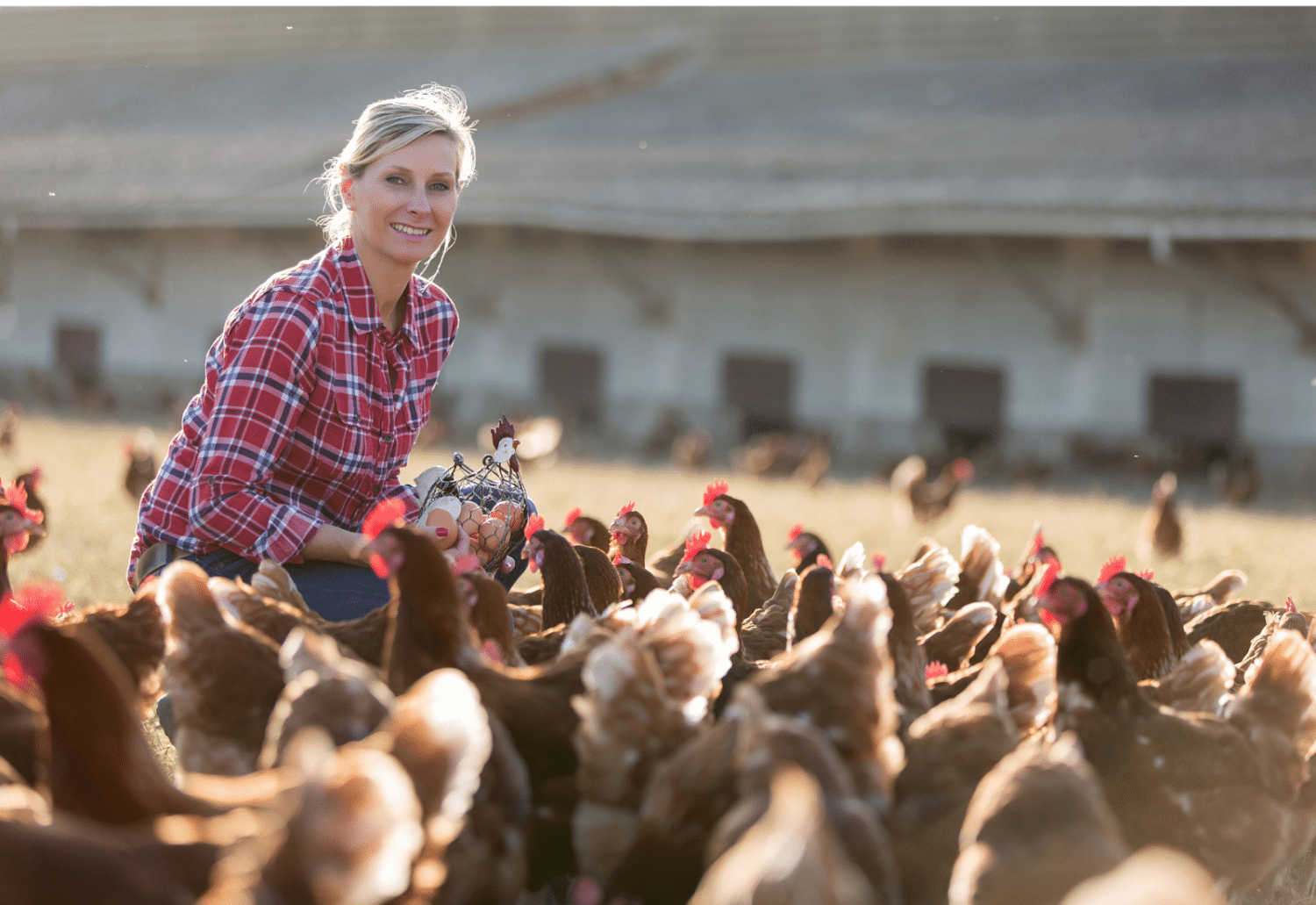
The smell of sizzling bacon, eggs, and hot coffee in the morning is about as American as a morning can be. But have you ever thought about where your eggs come from? Chances are you don’t know where your eggs come from. However, have you ever considered raising your own laying chickens so you know exactly where your eggs are coming from?
Whether you are a seasoned chicken owner or just starting to get into the idea, we want to help you find the best-laying chickens. Each chicken breed has its pros and cons. So let’s get cracking (pun intended) on what laying chickens are the best for you.
What Is A Laying Chicken?
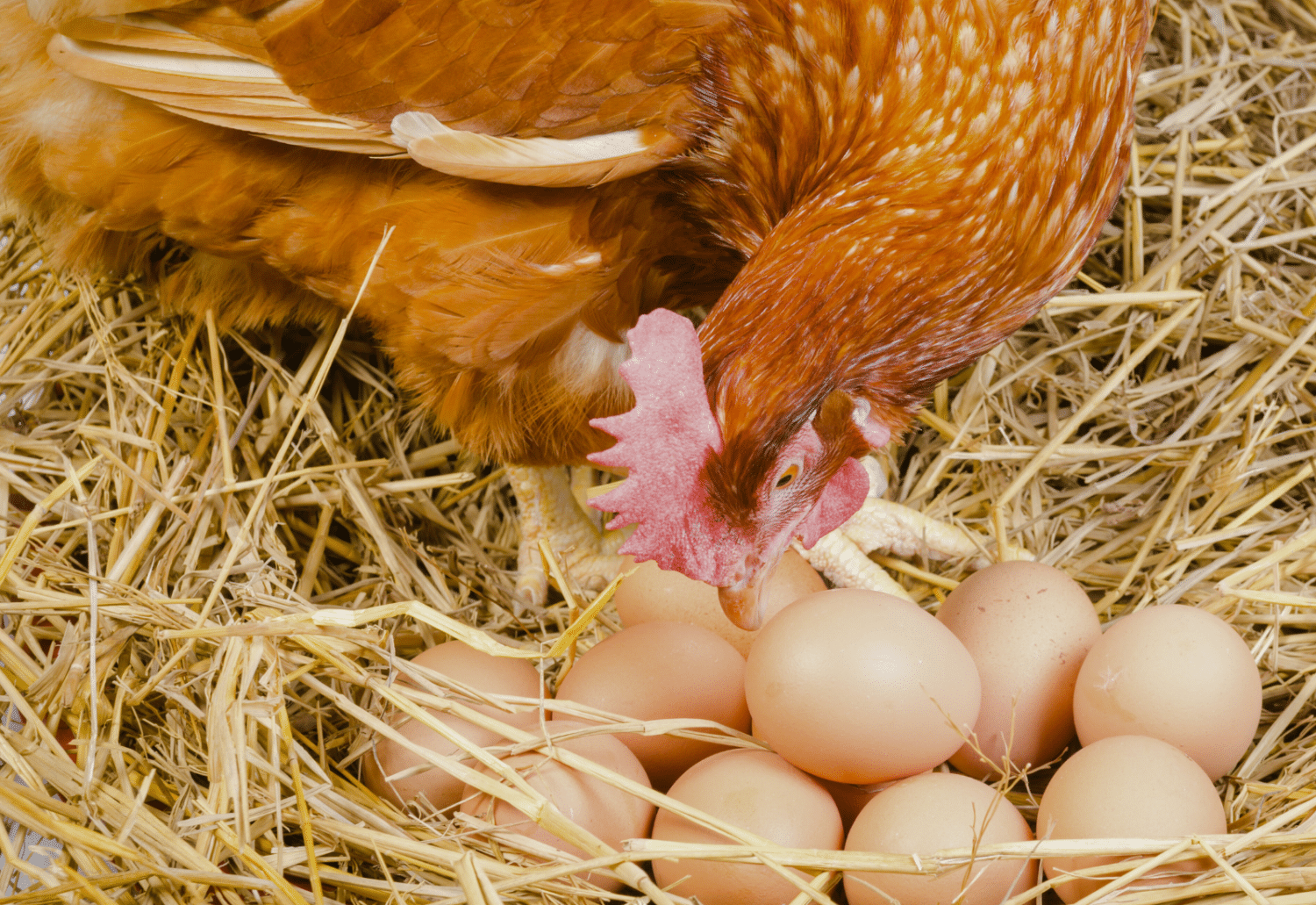
First things first, not all chickens are created equal. Sure, all the females have wings and lay eggs. Yet some chicken breeds lay more eggs than others. These breeds of chickens are known as laying chickens or laying hens.
How Many Eggs Do Laying Chickens Lay Per Day?
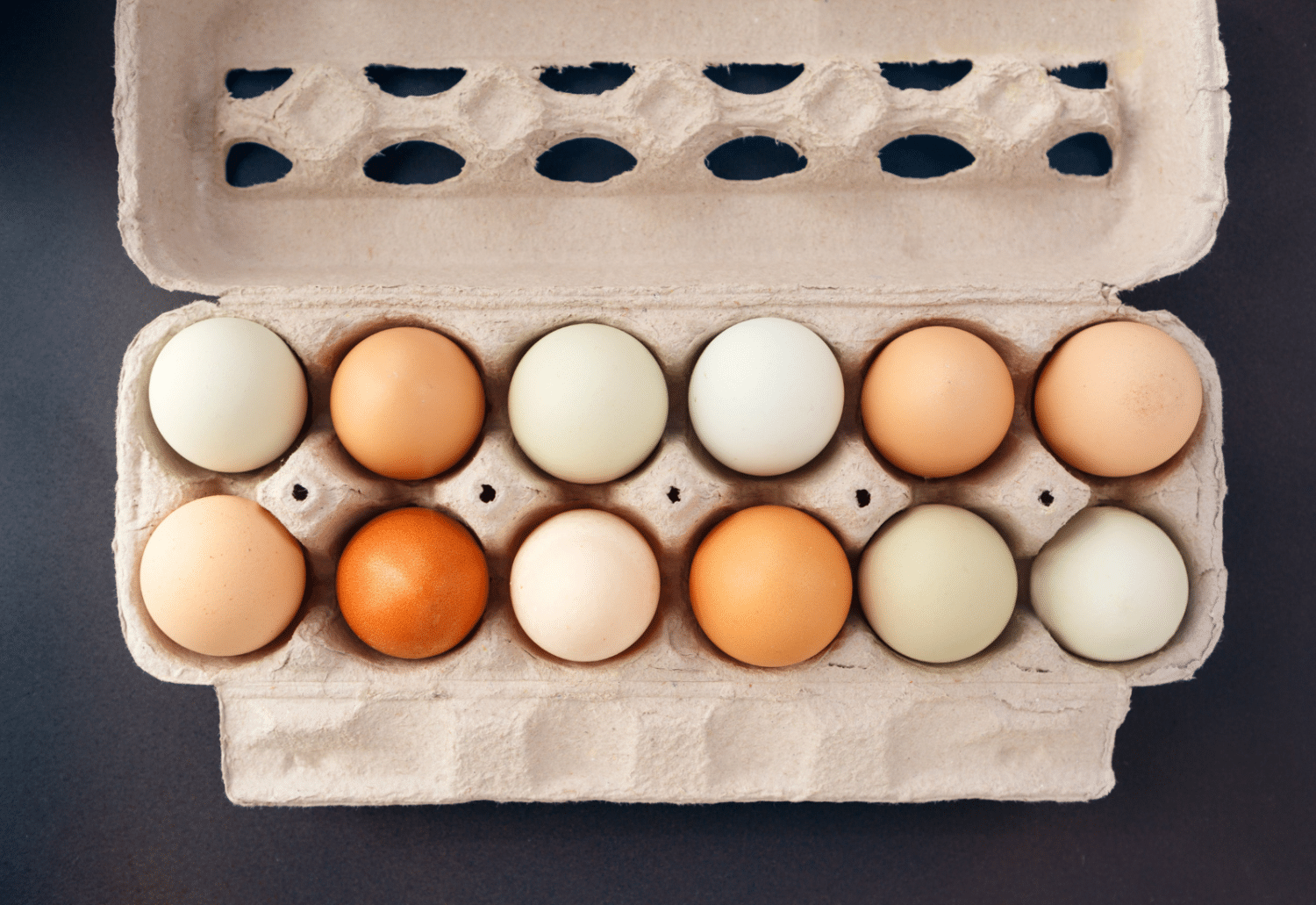
Most chickens only produce 1 egg per day., during laying season. While it is possible that they could produce 2 eggs in one day, that is not the norm by any means. This is why picking a chicken breed that lays the amount of eggs that will fit your egg needs is vital.
It may sound obvious to say, however, the more eggs you need, the more chickens you need.
How Many Laying Chickens Should I Have To Start?
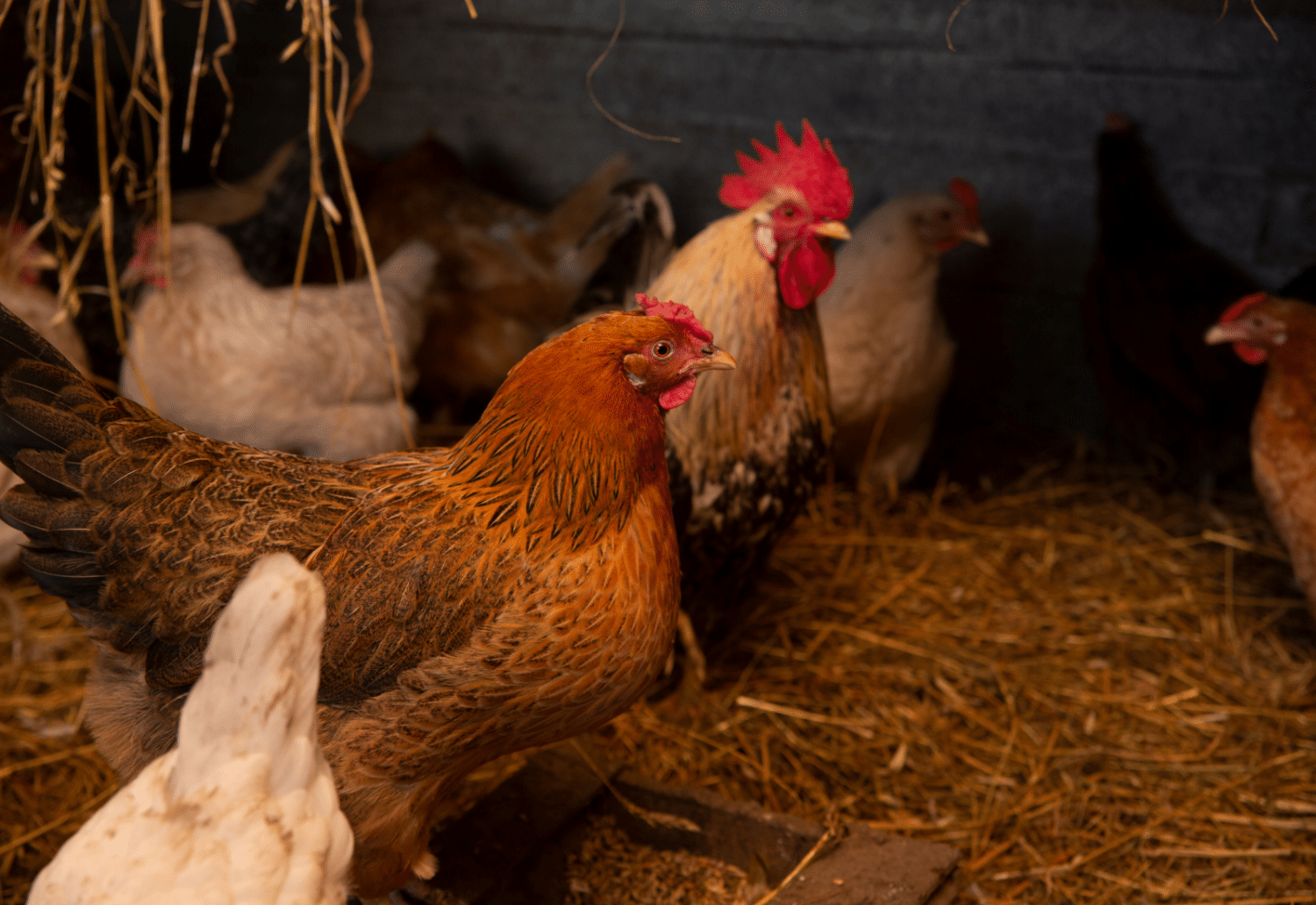
You should have a minimum of 3 chickens to start your flock. Chickens are highly social creatures and feel safest in groups. On the other hand, the longer you have chicken you may start to learn about “chicken math.” This funny anecdote is the idea that as a chicken owner you will always get more chickens when you can. This means your 3 laying chickens will quickly turn to 5, then 8, and maybe even more!
20 Best Laying Chickens By Egg Count
Determining which chicken is the best for you is not always easy. Look below at the 20 chicken breeds we think are the best-laying chickens. We know everyone has their opinion on what chicken is best, but we hope this guide will help you get started if you are new to all of this.
Isa Brown | Laying Chickens
Lohman Brown chickens are a great chicken to have for a family who loves eggs! Laying around 300 extra large eggs a year, these chickens are true workhorses. Keep in mind these chickens are loveable and great with kids!
Golden Comet | Laying Chickens
Golden Comet chickens are a great way to have a smaller chicken that produces a lot of eggs. These chickens can produce up to 280 eggs a year. Their eggs may be smaller in comparison to some of the other breeds on this list. So if you enjoy extra large eggs, this may not be the best breed for you.
Australorp | Laying Chickens
Australorps are a great breed of chicken, especially if you enjoy a different color than red and white. These chickens can lay 250 large eggs a year. A little-known fact about these guys is that they are the honorary national bird of Australia!
Delawares | Laying Chickens
Deleware chickens are an amazing heritage breed of chicken. They are also a dual-purpose chicken meaning that they can be a meat bird or an egg layer. Often times they are often sought out to be layers as they produce up to 250 eggs per year. However, since they are a dual purpose chicken it is easy to make an underperforming layer a meat bird.
Leghorn | Laying Chickens
Leghorn chickens are one of the most recognizable chickens in America. If you go to a grocery store and buy white chicken eggs, the odds are that they came from a Leghorn chicken. These chickens lay up to 250 large per year. One thing to note about this breed is that in cold climates, they can be subject to frostbite on their combs. If you desire this chicken and live in an area where it can get cold make sure that they have a warm sheltered area.
Rhode Island Red | Laying Chickens
If you are looking for chickens that lay up to 250 eggs a year, Rhode Island Reds are the breed for you. With their iconic color of brown eggs, you will love this chicken. However, remember these chickens can be a bit more feisty than other breeds.
Sussex | Laying Chickens
Sussex Chickens create 200 large eggs per year. These chickens are great foragers and would be ideal for someone who enjoys some free ranger chickens. Like many of the other layer chickens, the chickens are kind and almost cuddly.
Dominiques | Laying Chickens
Dominique chickens come with a speckled look that is often times associated with the chickens illustrated in children’s books. Able to produce 250 large eggs annually, these chickens are more than just nice looking. They provide well for your family and are not as large as some of the other chickens in this genre.
La Bresse | Laying Chickens
La Bresse chickens are known for their look and hale from the Bresse region of France. On the other hand, the French breeders will tell you that these chickens are only true Bresse is raised in Bresse, France. Able to lay 250 large eggs a year, these chickens are commonly called the American Bresse chickens here in the USA.
Ancona | Laying chickens
Are you looking for a laying chicken that is a bit more rare? Check out the Ancona laying chicken! This breed comes from the east coast of Italy and can lay 220 medium eggs in a year.
Barnevelder | Laying Chickens
Laying chickens do not have to be dull to look at; enter in the Barnevelder laying chicken. These chickens look like their feathers are nearly drawn on with intricate designs found on them. Able to lay 200 large eggs a year, these chickens are great to watch walk around your property.
Golden Laced Wyandottes | Laying Chickens
If you are looking for a chicken with nearly no health issues, take a look at the Golden Laced Wyandotte. These chickens are great if you desire a healthy and friendly chicken but not one that will sit on your lap; this chicken is for you! Able to lay 200 eggs a year, these chickens are a great way to make your farmette all you dreamed of.
Hamburg | Laying chickens
If you enjoy the idea of a larger chicken breed, Hamburg chickens may be what you’re looking for. Able to lay 200 medium eggs a year, you can enjoy plenty of eggs for you and your family. The Hamburg chicken is also unique because of its dark feathers.
Marans | Laying Chickens
If you a looking for a hardy chicken that does well in every climate take a look at Maran Chickens. Both the male and female chickens are docile and friendly, making them ideal for families. Producing 200 medium-sized eggs a year, these chickens may not be what you desire if having an abundance of large eggs is what you are after.
New Hampshire Red | Laying Chickens
The New Hampshire Red is often mistake for the Rhode Island Red as they are similar in color and size. However these chickens are a bit lighter in color and look more “red” than the Rhode Island breed. Able to produce 300 medium eggs a year these chickens may be just what you are looking for if you desire a smaller quantity and size of eggs.
Plymouth Rock | Laying Chickens
Plymouth Rock, or Barred Plymouth Rock Chickens as they are also known, are an iconic chicken with a speckled look. If you are worried about chickens that can fly away then this may be the chicken for you as they are too heavy to fly very far. These chickens are able to lay 200 large eggs a year, making them a great chicken for the average sized famiy desiring a few eggs a day.
Buff Orpington | Layching Chickens
If you are looking for a chicken that is more like a lap dog, the Buff Orpington is for you. These chickens were introduced in the late 1800’s and have become a popular back yard chicken ever since. Producing 200 medium sized eggs a year you may find yourself enjoying the companionship with your chicken just as much as the eggs that they provide for you.
Amerucana | Laying Chickens
If you are looking for a chicken that lays some really unique eggs the Ameraucana is what you are looking for. These chickens create beautiful eggs that are almost robin egg blue. Able to lay 180 eggs a year, these chickens are a really fun and unique chicken to consider.
WELSUMMER | LAYING CHICKENS
Wellsummer chickens bring together popular breeds of Leg Horns, Rhode Island reds and several other chickens to create this unique breed. Originating in the Netherlands for egg production this chicken came to be in the early 1900’s. Producing 160 large eggs a year this is great for the person who is looking to have a small supply of eggs on hand.
Laying Chicken Guide For Egg Production
| Chicken Breed | Eggs Per A Year | Egg Size |
| Isa Brown Chickens | 300 | Extra-Large |
| Lohmann Brown Chickens | 300 | Extra-Large |
| Golden Comett Chickens | 280 | Medium To Large |
| Australorp Chickens | 250 | Large |
| Deleware Chickens | 250 | Large |
| Leghorn Chickens | 250 | Large |
| Rhode Island Red Chickens | 250 | Extra Large |
| Sussex Chickens | 250 | Large |
| Dominique Chickens | 250 | Large |
| La Bresse Chickens | 250 | Large |
| Ancona Chickens | 220 | Medium |
| Barnevelder Chickens | 200 | Large |
| Golden Laced Wyandotte Chickens | 200 | Large |
| Hamburg Chickens | 200 | Medium |
| Maran Chickens | 200 | Medium |
| New Hampshire Red Chickens | 200 | Medium |
| Plymouth Rock Chickens | 200 | Large |
| Buff Orpington Chickens | 200 | Medium |
| Ameraucana Chickens | 180 | Medium To Large |
| Welsummer Chickens | 160 | Large |
What Is The Best Producing Laying Chicken Breed?
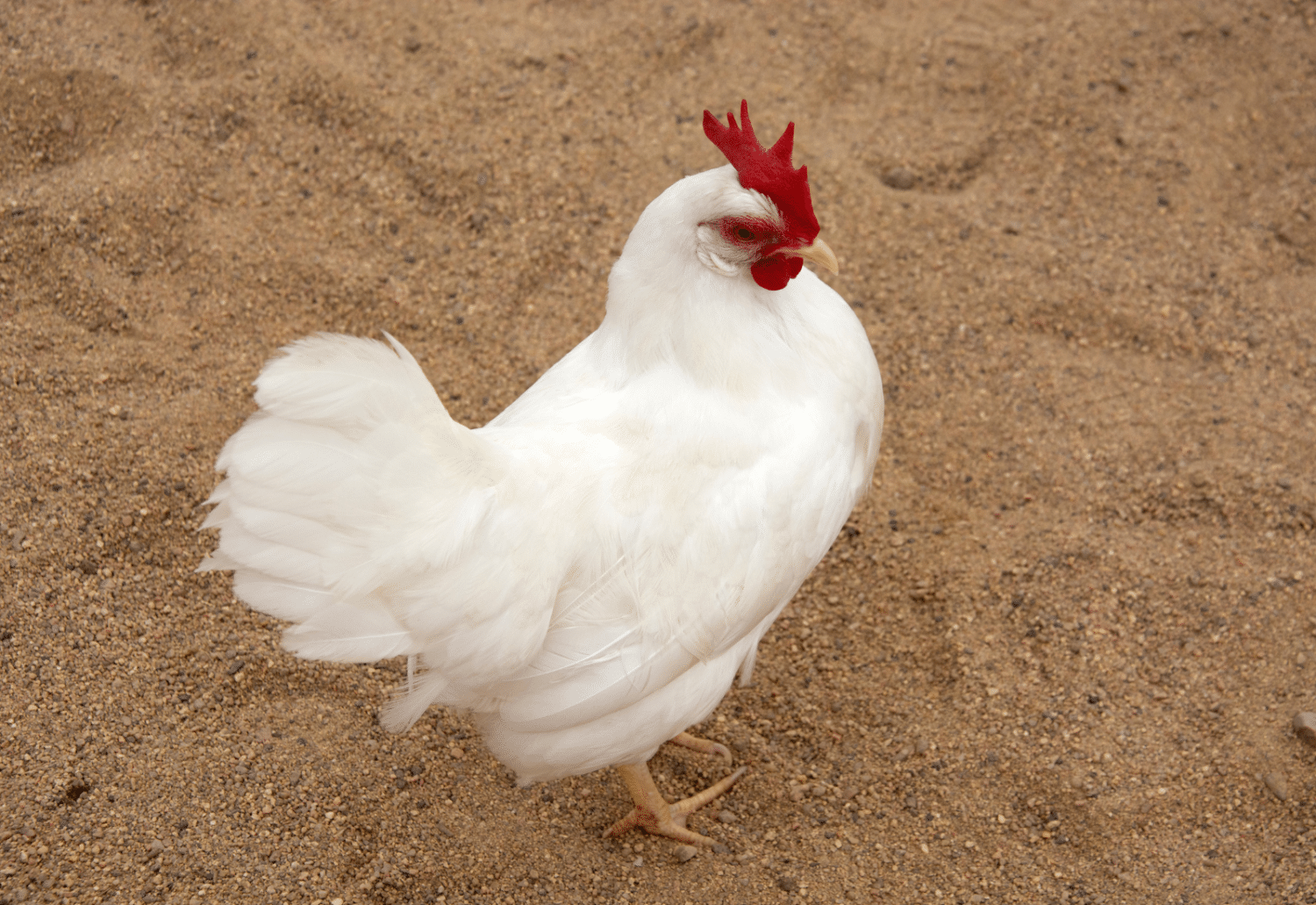
White Leghorns hold the record of the best egg-laying breed of chicken. If you are looking strictly to maximize the volume of eggs, this will be your go-to chicken. On the other hand, if you are accustomed to brown eggs, you may feel let down as these chickens only produce white eggs. And while studies show that there is no flavor difference between the two, we know that your perception is everything!
What Are The Most Popular Laying Chickens?
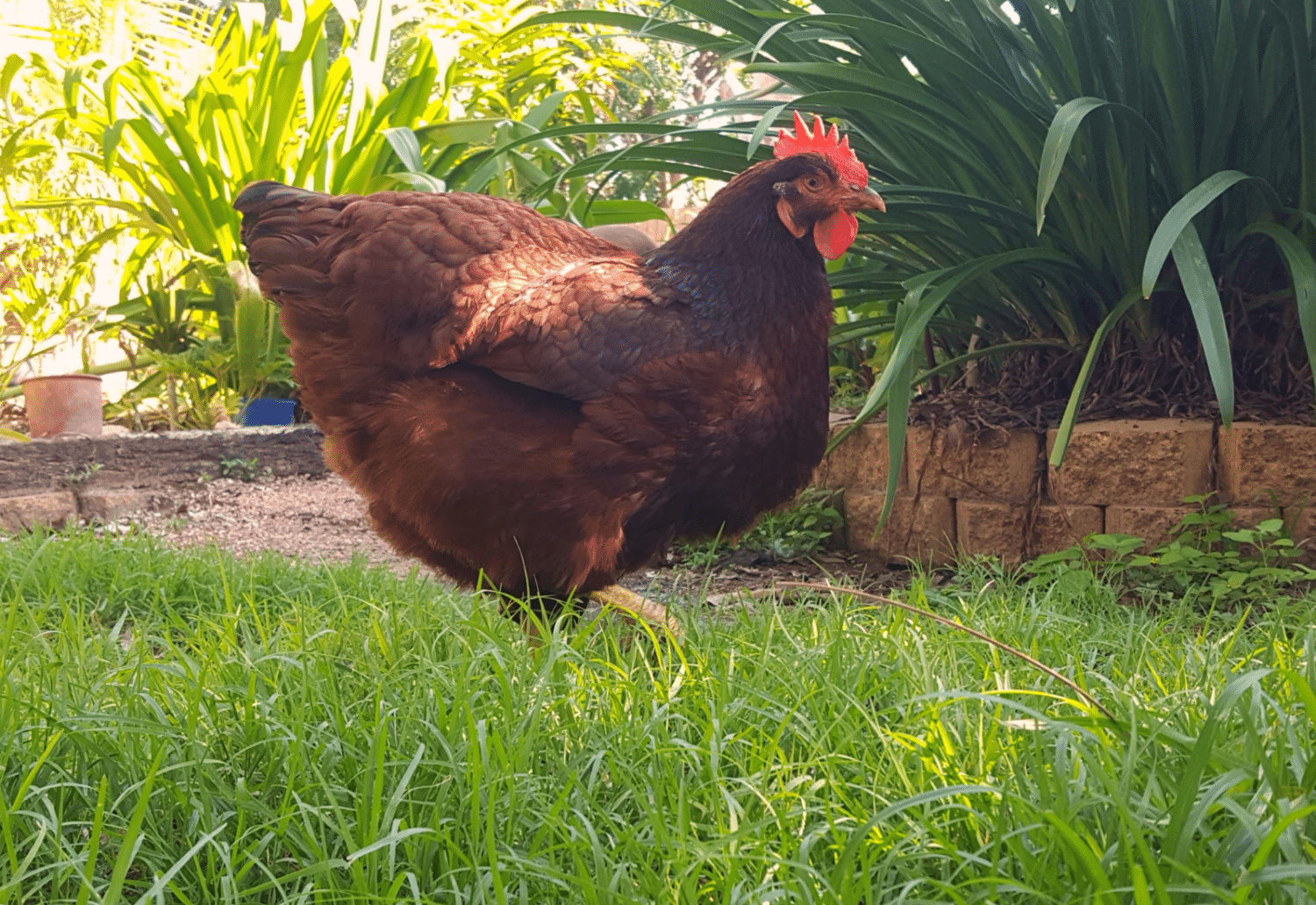
Rhode Island Reds are one of the most popular laying chickens. The main reason for this is that they are very hardy. However, if you have young children, this may be a breed to avoid. The primary reason you would avoid this chicken is that they can be a bit rough with each other and with people they are not familiar with chickens.
How Old Will My Laying Chickens Be Before They Start Laying Eggs?
Most laying chickens will start laying eggs around 4 months old. This means you will have 4 months where the chickens are more like pets than a “benefit.” On the other hand, they can still be beneficial by eating bugs and keeping the pests controlled on the property.
What Type Of Laying Chickens Are Best Around Children?
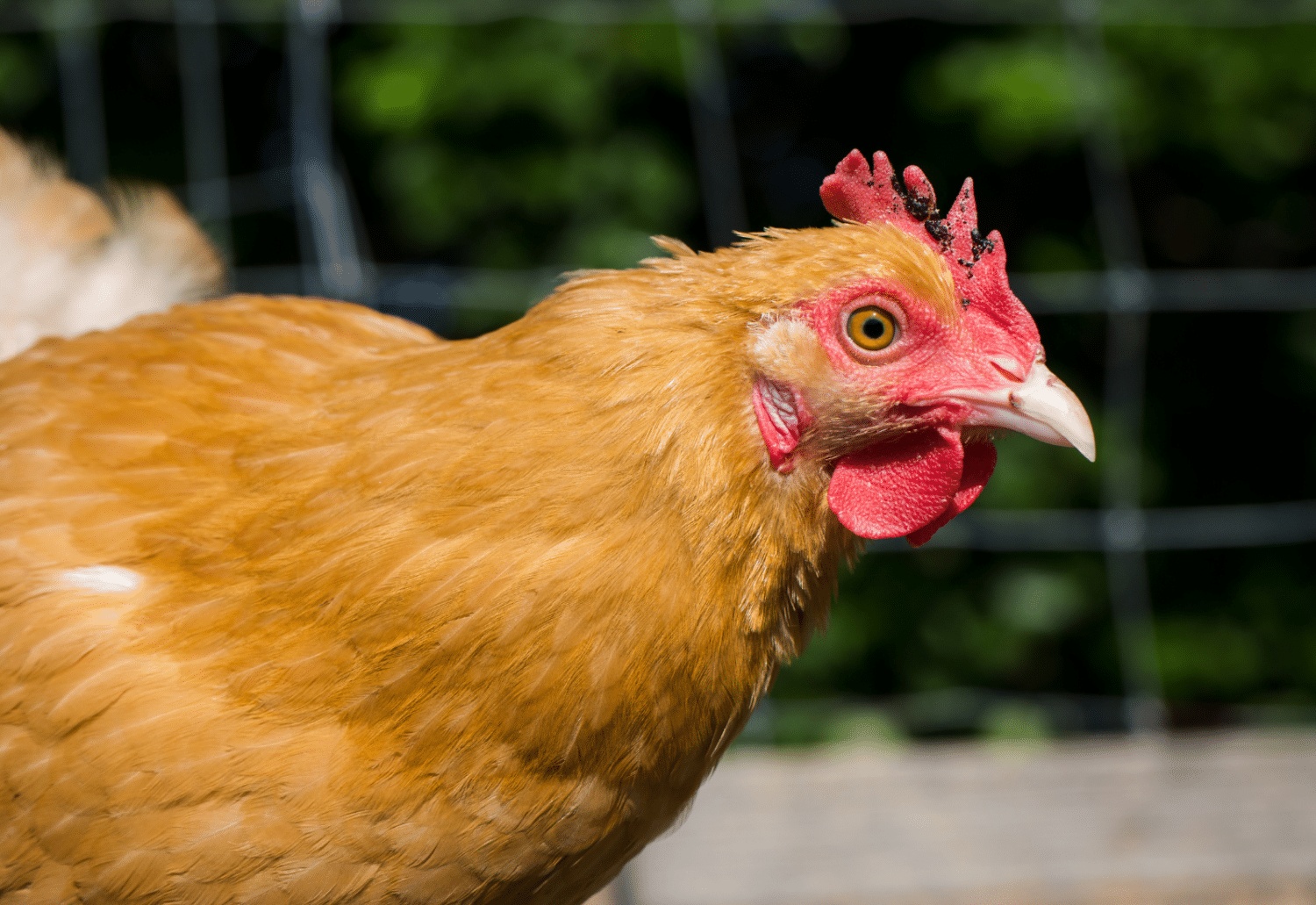
Buff Orpingtons are the best-laying chickens for families with children. This breed of chicken is docile by nature and is not easily agitated. In fact, some people go as far as to call this breed of chicken the golden retriever or chickens. If that doesn’t say “safe,” then we aren’t sure what does!
What Laying Chickens Do Best Around Dogs?
Golden Comet chickens are great egg-laying chickens for those with dogs. These chickens can enjoy confinement or enjoy being outside of the coop for free-ranging. Since these chickens are of larger size, they can easily stand being around dogs. In fact, if you have an Australian Shepherd, they may even keep them herded for you when out of the coop and free-ranging.
What Laying Chickens Do Best Around Cats?
The best chickens to be around cats are Silky. These chickens are quite friendly and are on the smaller side, ensuring that your feline friend doesn’t feel intimidated. However, make sure that you properly train your cats to be around the chickens so everyone can live in harmony.
What Laying Chicken Has The Best Personality?
Australorps are arguably one of the most personable chickens. Kind and even cuddly, these chickens are a great way to get even the least interested person excited about chickens. So, if you are looking for your next chicken friend, why not give the Australorp a try?
What Do I Need To Feed My Laying Chickens?
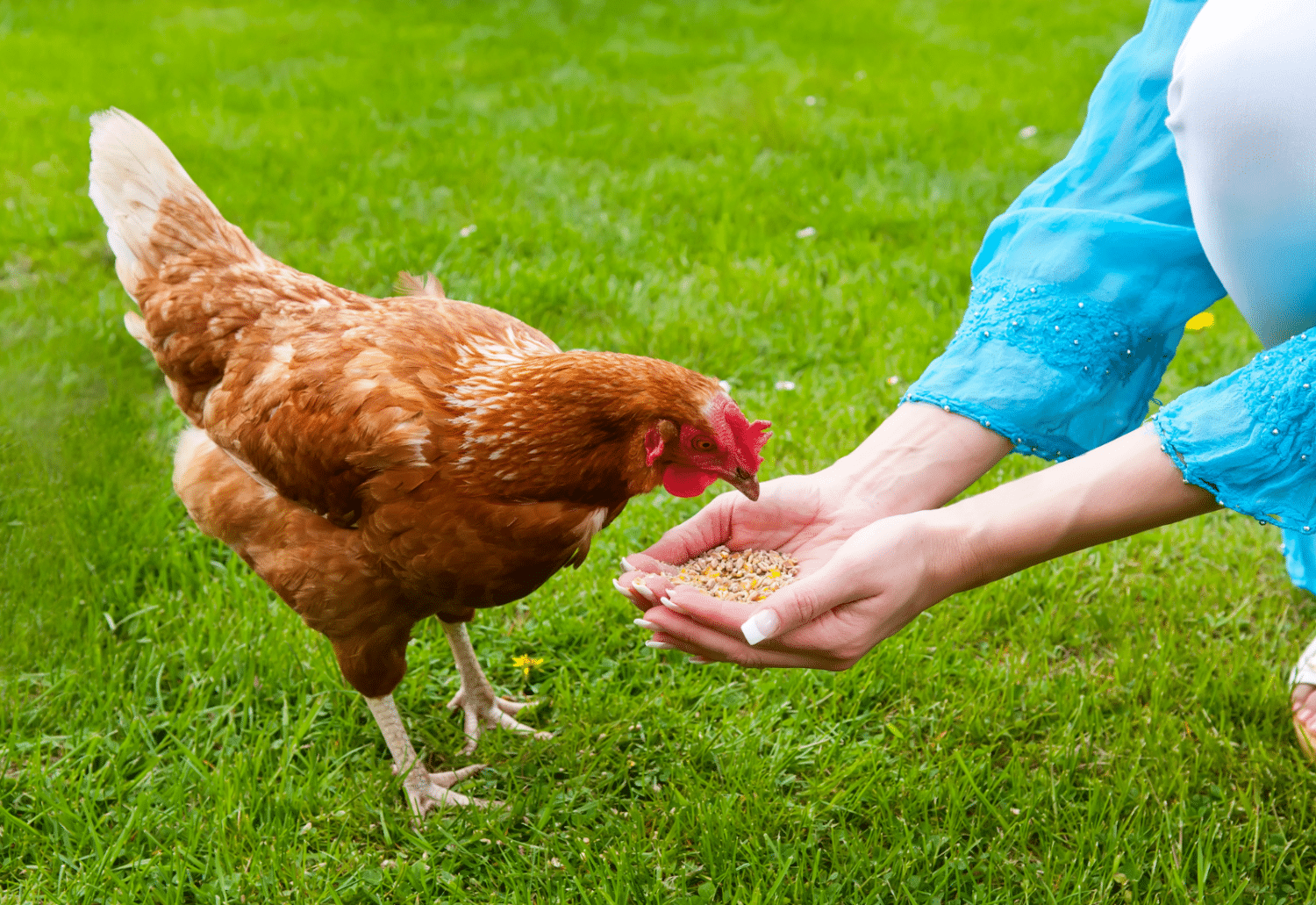
Your laying chicken needs a diet of 17% protein and 4% calcium. This should be in a pellet or crumbled-up food for easy eating and digestion. Additionally, you need to make sure your chicken has plenty of fresh water.
Additionally, you can give your chickens many kinds of scrap foods. Acceptable food scraps would be veggies, fruits, grains, and breads. However, you should never give your chickens meat as a scrap to eat as it can cause health issues.
If you are looking to give your chickens some treats, take a look at giving them some dried mealworms.
What Is the Best Laying Chicken For Beginners?
Silkies and Buff Orpingtons are the best-laying chickens for beginners. Silkies are great for those with families as they are friendly and great with children. However, Silkies lay fewer eggs than other breeds. Buff Orpingtons are equally as friendly but lay many more eggs than other breeds.
How Many Years will My Laying Chickens Produce Eggs?
Your laying chickens will produce eggs for 5-10 years. The length of time that your chicken can produce eggs is dependent upon their health and overall diet. For the best results, make sure that your chickens are given a quality diet and are medically taken care of when they show any signs of illness.
How Many Laying Chickens Should I Have For a Family Of 4?
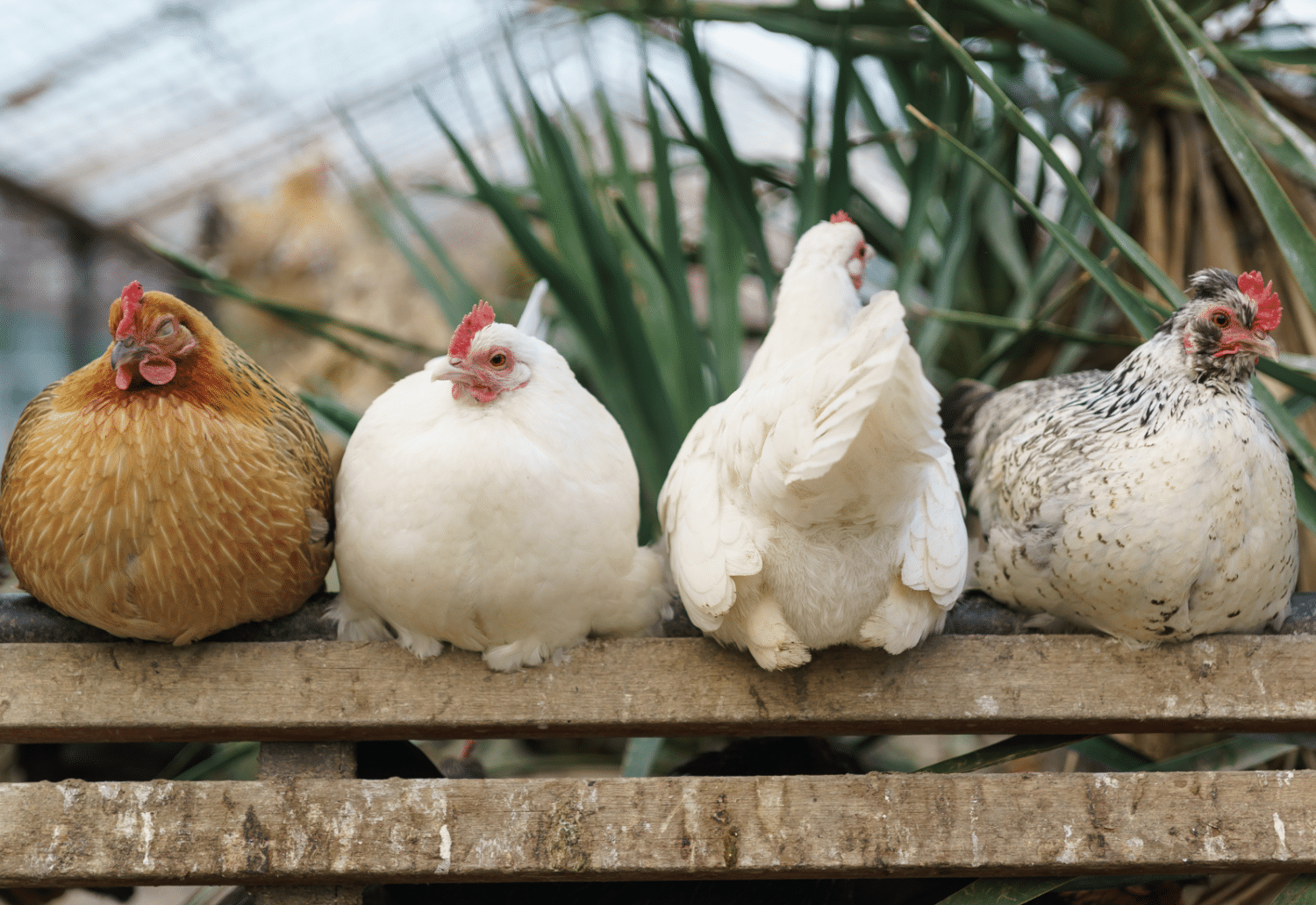
We recommend that you have one chicken per person in your home. This will allow each person to have 1 egg per day (except when they are not laying). On the other hand, if you have a family that loves eggs or have a couple hungry teenagers, you may want more chickens. To help you understand how many eggs you may receive each day from your laying hens, take a look at the chart below. We hope that this can help you meal plan for the week and have . gernal idea of hw much these chickens can add to your food budget. (Keep in mind this is a guide and chickens may not lay eggs every single day).
| Number Of Chickens | Aprox. Eggs Per Day | Meal Serving |
| 3 | 3 | 1 Omelet (3 Eggs Per Serving) |
| 4 | 4 | 2 Portions Over Easy Eggs (2 Eggs Per Portion) |
| 5 | 5 | 1 Omlete (3 Eggs Per Serving) 1 Portion Of Over Easy Eggs (2 Eggs Per Portion) |
| 6 | 6 | 2 Omletes (3 Eggs Per Serving) |
| 7 | 7 | 2 Omletes (3 Eggs Per Serving) 1 Scrambled Egg (1 Egg Per Portion) |
| 8 | 8 | 4 Portions Over Easy Eggs (2 Eggs Per Portion, Perfect For a Family Of 4) |
| 9 | 9 | 3 Omlets (3 Eggs Per Serving) |
| 10 | 10 | 3 Omlets (3 Eggs Per Serving) 1 Scrambled Egg (1 Egg Per Portion) |
| 11 | 11 | 3 Omletes (3 Eggs Per Serving) 1 Portion Of Over Easy Eggs (2 Eggs Per Portion) |
| 12 | 12 | 2 Omletes (3 Eggs Per Serving) 3 Portions Of Over Easy Eggs (2 Eggs Per Portion) |
How Long Are My Fresh Chicken Eggs Good For?
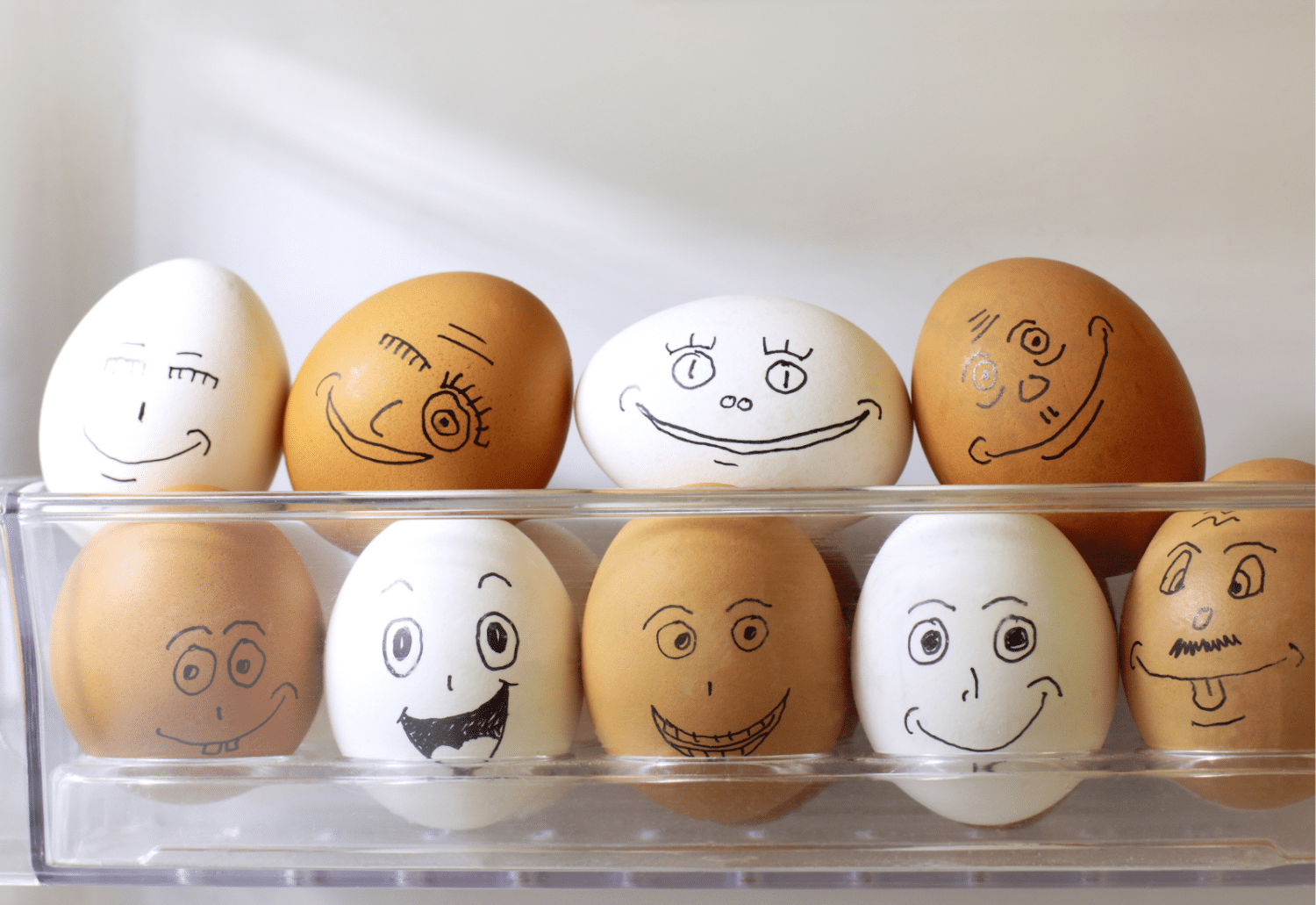
Your unwashed chicken eggs will last 2 weeks un-refrigerated and 3 months or more if they are refrigerated. The reason you do not want to wash your eggs once they have been laid is the eggs contain a bloom on the shell. The bloom is the protective layer on the shell that keeps your egg stable.
How Can I Preserve My Eggs From My Laying Chickens?
Water glassing, dehydrating, pickling, and freezing, eggs are all great ways to preserve your eggs. Preserving eggs can be somewhat difficult. If you have never done something like this before, reach out to a friend who has some experience with the process. If you are looking for some inspirational ideas on where to get started, take a look at the videos below for how to do each method.
Waterglassing
Dehydrating
Pickling
Freezing
Is It Worth It to Raise Laying Chickens?
Yes. We think it is “worth it” to raise chickens of your own. If you enjoy learning about the way nature works, laying chickens are a great way to understand the lifecycle. You will be able to see your chicks turn into chickens and then lay eggs of their own. If you want to see the entire life cycle of a chicken, have a rooster on your property to fertilize the eggs. We think that rasing chickens give you three primary benifits.
Small Business
If you are trying to teach your children some business sense, selling chicken eggs is a great way to get started. Chicken egg sales require minimal work and allow you to teach your children that money comes from that work. The price point that you can charge for your eggs will vary on your location.
Self-Sufficiency
The American way is to be as independent as possible. What better way than being able to provide some of your own food? By having backyard laying hens, you are able just to do that for your family and maybe even some of your friends.
Knowing Your Source
As we mentioned earlier, when you go to the grocery store, the odds are you don’t know where your eggs are actually coming from. When you have backyard chickens, you know exactly what went into them and how fresh they are. Additionally, you can choose the diet that your chickens have, which can be great if you are trying to ensure that your chickens have a certain diet to assist with your dietary needs.
Do I Need to Have a Rooster With My Laying Chickens?
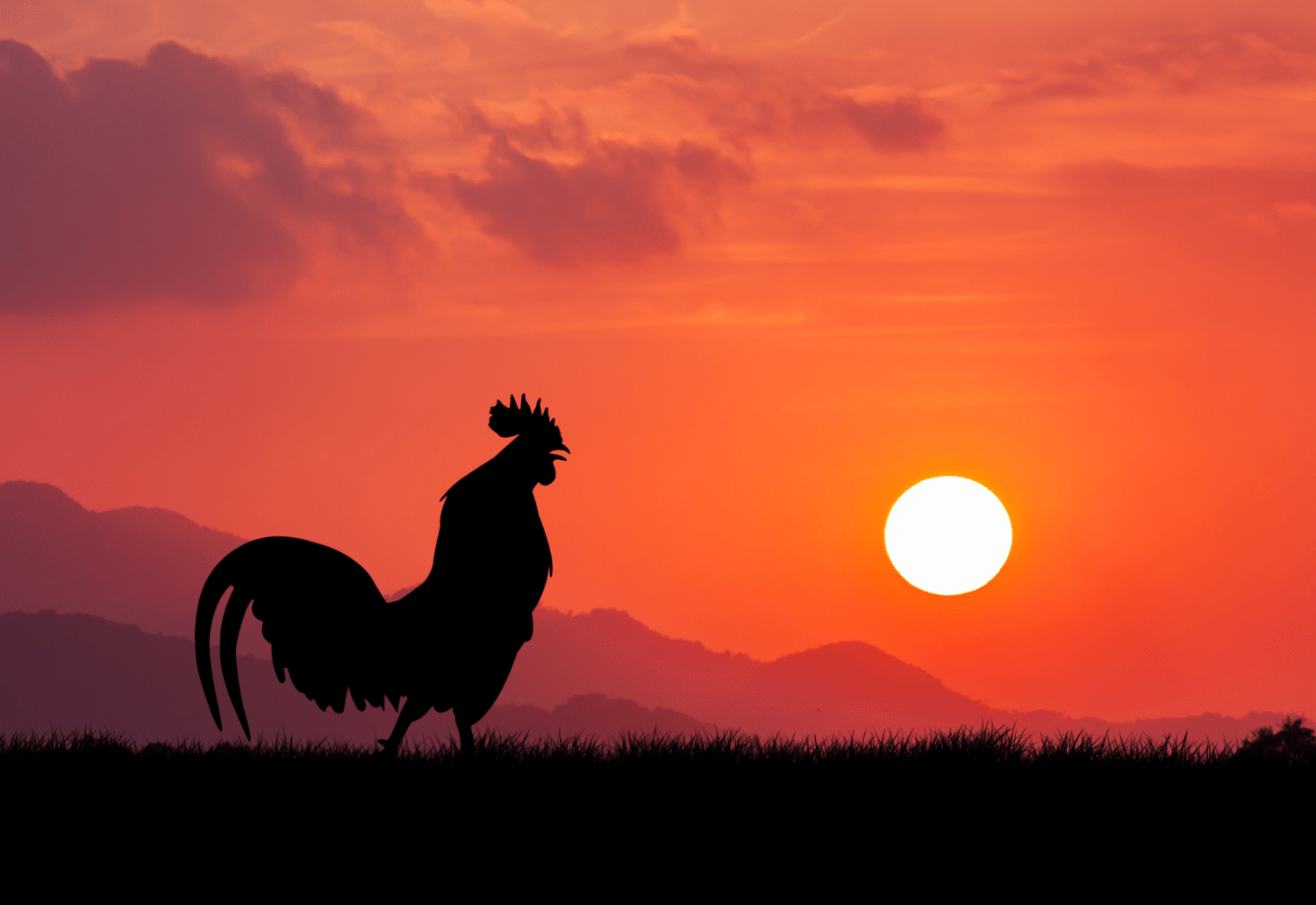
No. You do not have to keep a rooster with your laying hens. However, roosters provide two major benifits when it comes to your laying chickens.
Protection:
Roosters will offer your hens protection. They do this by roaming the area where the chickens are located. Roosters work by “sounding the alarm” to let the hens know when it is time to take cover from predators.
Reproduction:
The other primary function of roosters is to fertilize the eggs. Rooster will give you the opportunity to increase your flock and help you to have even more eggs. However, make sure that you have only have 1 rooster for every 10 chickens.
What Should My Laying Chickens Live In?
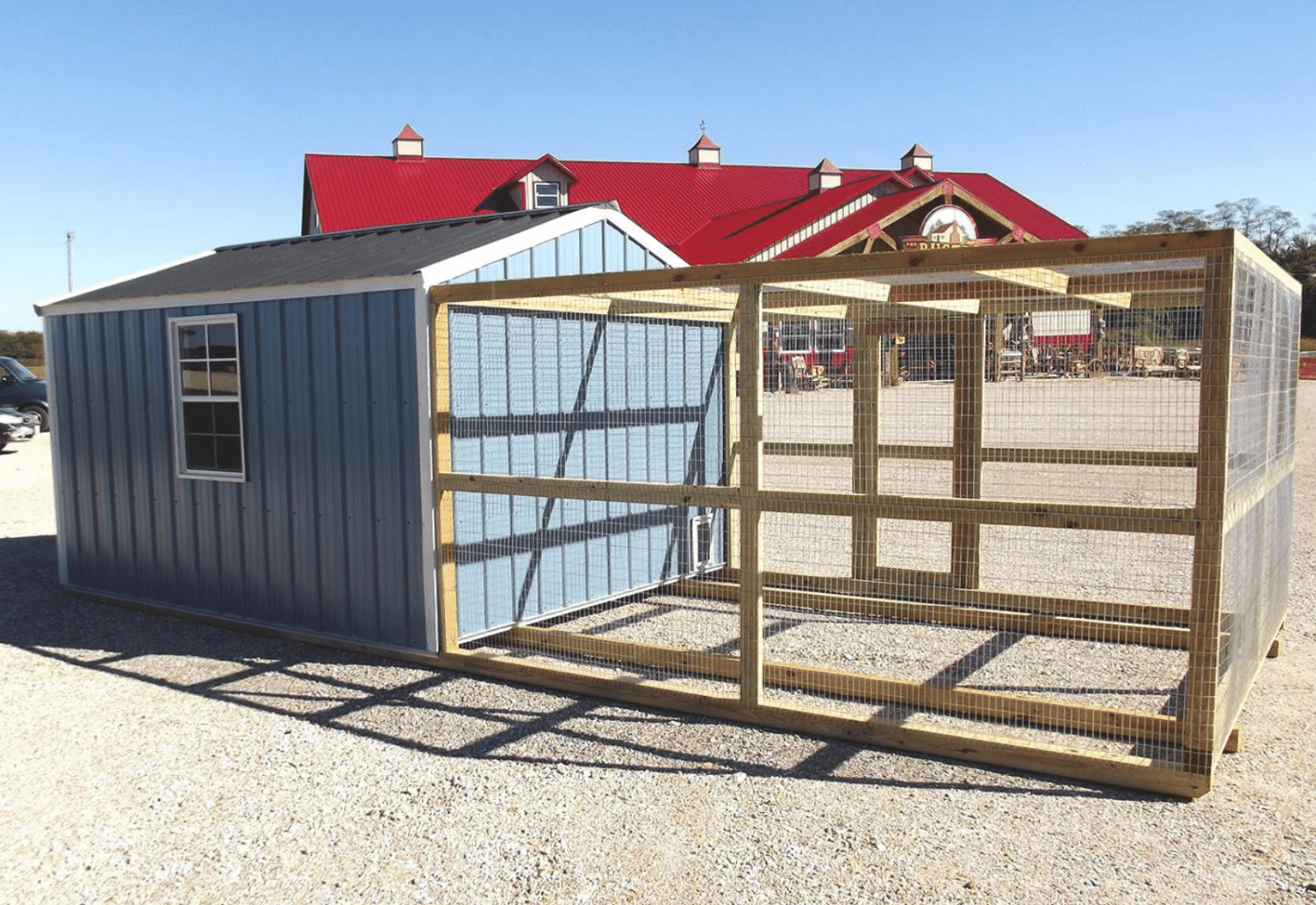
our laying chickens should live in a chicken coop. At The Backyard and Beyond, we create high-quality chicken coops in various sizes to accommodate your flock. We also create beautiful sheds, and garages to store all of the supplies your chickens may need. On the other hand, you may want to give your chickens the ability to roam around more than a chicken coop can offer. If that is your desire, we recommend a mobile chicken coop from Happy Farmer, they even offer free shipping.
So, How Many Chickens Will You Have?
At Back Yard and Beyond, we want you to be able to enjoy having your own flock of chickens. We create some of the best chicken coops in the Versailles and Ellsinore, Missouri. We would love to build you your next chicken coop. So whether you want a coop for a small flock or want something larger, we are confident that we can get it done before the rooster crows.

FINANCING OPTIONS
Everyone should be able to afford quality; this is why we offer the Rent-to-Own option on our cabins, garages, sheds, animal structures, and greenhouses.
Try our 3d shed builder!

